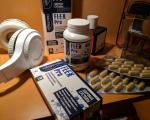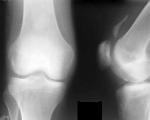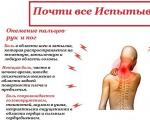Human anatomy: thoracic vertebrae
Man is an inquisitive being. He is interested in everything that happens around him. He asks himself questions: what, why and how? The most common question is understanding how a person works. It is noteworthy that the responses received are admirable. In this article, attention will be paid to the spine, namely its thoracic part.
The structure of the spine
The core of the human body, or spine, resembles the English letter "S". For general development, I would like to note that the spine has several curvatures in its normal position - these are two kyphosis, thoracic and sacral, as well as two lordosis (curvature in the opposite direction), lumbar and cervical. Due to this, a slight springiness is observed. This consists in softening shocks, oscillations, shocks when walking and while running. In order for this “device” to be the most reliable, the muscles and ligaments take on a considerable share of the work, providing moderate pressure on the spine.
If you count the vertebrae that make up the spinal column, the amount ranges from 32 to 34. The vertebrae are located one on top of the other.
The role of the spine
Awareness of the role of the spine in the human body radically changes the attitude towards it as a device and an “organ” as a whole. It achieves the following goals:
- The head is safely supported, the rigidity of the skeleton is ensured.
- The human body is securely held in an upright position.
- Preservation of the spinal cord from damage.
- The spine is the part to which other skeletal bones and muscles are attached.
The list of merits of the spine is incomplete, it can be continued. But I would like to draw attention to a separate part of the spinal column - this is a vertebra.
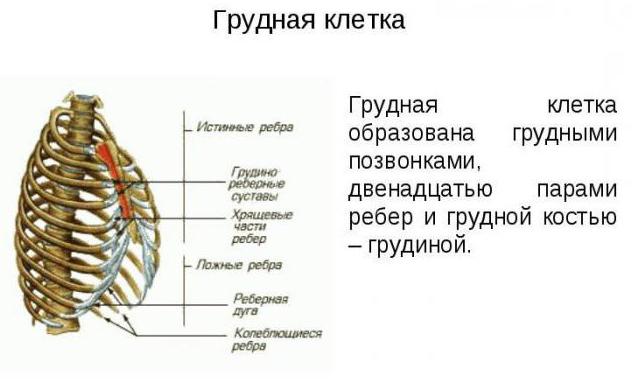
Vertebra
Vertebra - this is the vertebra, but in Latin. It is an integral part and the main link of the spine itself. The vertebra has a spongy structure and a peculiar composition. This is the presence of bone beams, between which depressions are observed. Bone marrow is visible in these depressions. The shape of the cylinder - the front of the vertebra - this is his body. Behind you can see the arch of the vertebra and 7 processes. There is another hole that cannot be overlooked. It contains the spinal cord.
The spine can be visually divided into several sections. It begins with the cervical region, in which there are 7 vertebrae. The largest section is the chest. How many vertebrae are in the thoracic region? A strict count showed the number - 12. Lumbar - 5 vertebrae, the same number in the sacral and 4 vertebrae in the coccyx. The last two departments are not so mobile. Let's take a closer look at the thoracic spine.
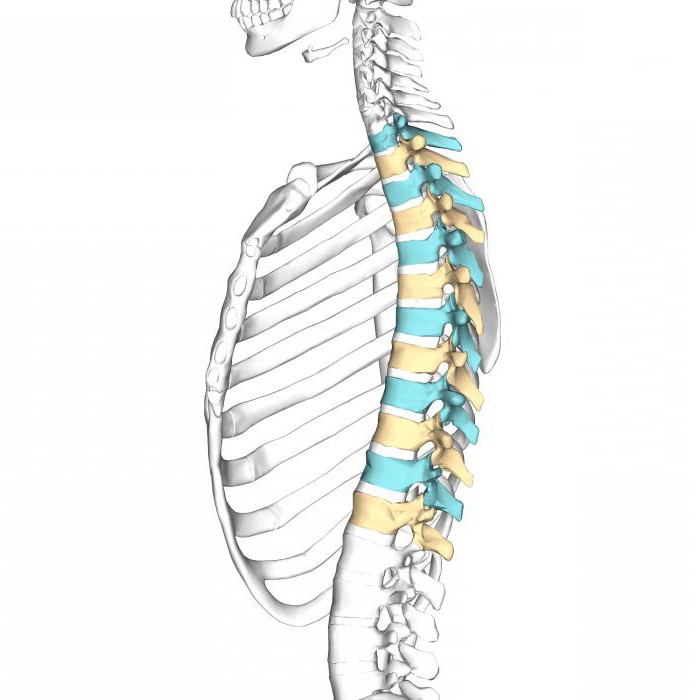
Thoracic spine
12 is the number of thoracic vertebrae. They differ markedly from the neck ones in that they are larger and thicker. The height of the vertebrae themselves is increasing from top to bottom. The largest and most prominent thoracic vertebra is the twelfth.
Physiological kyphosis is what distinguishes this department from others. In its normal state, it looks like the letter "C". The roundness is turned back. This structure helps the spine to keep upright and rationally distribute the load of the body between all its branches.
The thoracic part of the spine takes part in the formation of the posterior chest wall. Ribs are attached to the vertebrae, namely to their bodies and processes. All this action happens with the help of joints. The design of this cage would be incomplete without the sternum - it is she who connects the ribs in front so that a frame is obtained.
Department specifics
The first distinguishing feature is the small height of the intervertebral discs. Therefore, all other parts of the spine are more mobile than this one. The chest restricts mobility. The processes of the thoracic vertebrae, called spinous, also take part in this. Thoracic vertebrae have another feature - a narrow passage of the spinal canal. This is fraught with the fact that compression of the nerve endings and even the spinal cord occurs if diseases such as a hernia begin to develop.
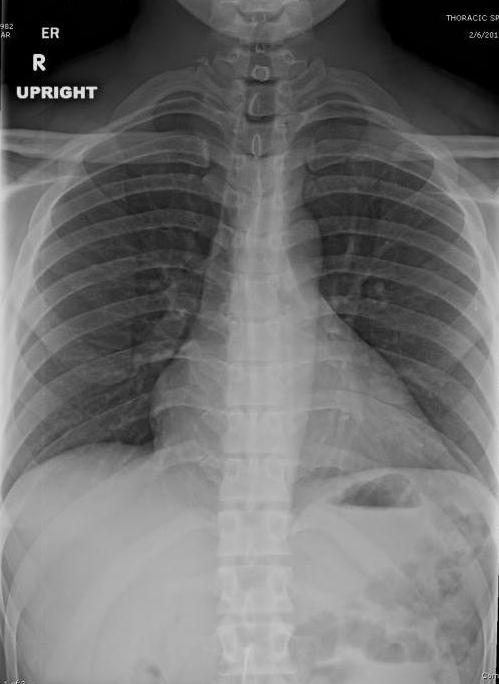
The structure of the thoracic vertebra
Consider the thoracic vertebrae from the second to the ninth. On the side, on the posterior surface of the vertebra, one can observe the lower and upper costal semi-depressions. There is a combination of a semi-depression, located at the top of the underlying vertebra, with the one located at the bottom of the vertebra, located above. Thus, for the costal heads, a surface is formed where the joint is placed.
Thoracic vertebrae from the tenth to the twelfth. By studying them, the following properties can be observed.
- Vertebra number 10 has only one semi-depression, its location is at the upper edge of the body. Intended for the rib.
- The 11th and 12th vertebrae have full recesses for the desired ribs. The vertebral foramina of the thoracic vertebrae are rounded, but noticeably smaller than those of the cervical vertebrae.
I would like to draw attention to the processes located transversely, they are located on the vertebrae and thicken at the ends. There are no indentations on the transverse processes of the 11th and 12th vertebrae.
It is noteworthy that the spinous processes of the thoracic vertebrae are longer. They have a pointed triangular shape, tilted down and superimposed one on top of the other, which resembles tiles on the roof of a house. Thanks to this, overextension of the spine does not threaten. If you carefully examine the x-ray, then from the fourth to the tenth vertebrae, the aforementioned “tile” is formed.
Let's turn our attention to the processes of the joints. Their location is seen in the frontal region.
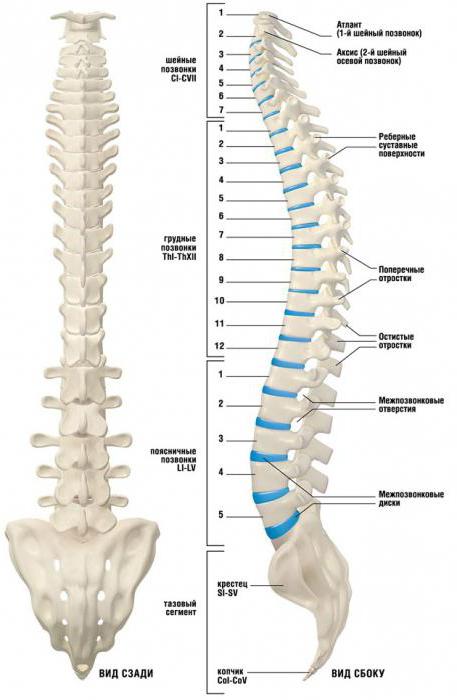
In more detail, it can be noted that the thoracic vertebra consists of:
- Vertebral bodies.
- Vertebral arches.
- Vertebral clippings.
- Articular processes.
- Process of the transverse.
- Costal depression of the transverse process.
- Costal recesses (upper and lower).
- Spinous process.
- Vertebral foramen.
Considering the first thoracic vertebra separately, it can be noted that its body is distinguished by the inclusion of a complete costal depression at the top for articulation with the head of the first rib. And the semi-depression, which can be found below, articulates with the head of the second rib.
Functions
Although the thoracic vertebrae do not feel the weight load, the importance of the function of the thoracic region should not be underestimated:
- The body is held upright.
- The spinal cord located in the spinal canal is protected.
- Shock-absorbing, softens falls, blows.
- It is the place where the ribs are attached.
- Taking part in the creation of the chest, it protects the internal organs.
The thoracic region is responsible for the preservation and functioning of such organs as: adrenal glands, bronchi, lungs, stomach, liver and, of course, the heart. It should be noted in the described department some structures:
- vertebrae - 12 pieces;
- discs that are between the vertebrae, joints and holes;
- thoracic spinal cord;
- some nerve roots;
- muscles.
Due to the low mobility, the thoracic vertebrae are not so often subject to changes and diseases. But pathologies exist.
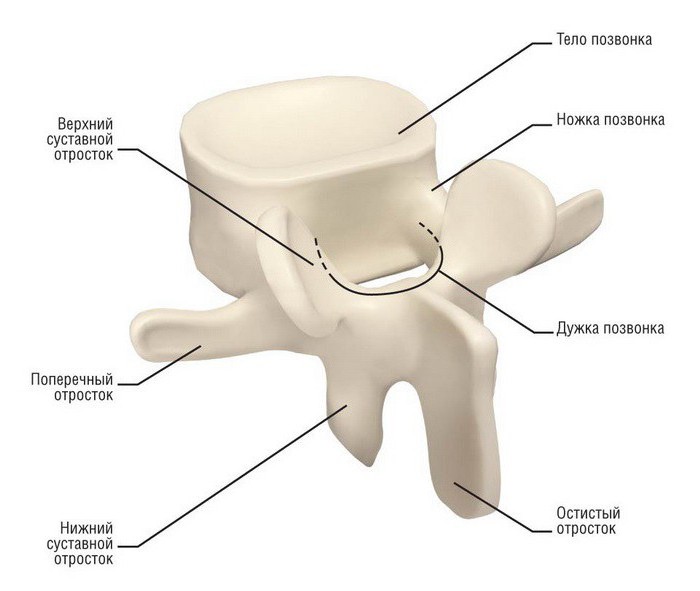
The most common pathologies
Growing loads on the discs, which are located between the vertebrae, increase the risk of osteochondrosis. Along with this, there are unpleasant, painful sensations in the chest area. This happens when the nerve endings are compressed.
Hernias that appear between the vertebrae are an atypical disease for our department. But there are exceptions. This unpleasant thing usually "settles" on the sixth vertebra. Why is that? It is this vertebra that is central in the thoracic region and in the entire spinal column. The maximum load falls on the sixth vertebra. Therefore, he is more vulnerable and has a predisposition to injury. Accordingly, the seventh vertebra also takes part in the occurrence of the aforementioned hernia.
The thoracic vertebrae are the least likely to be injured. This can only happen if you deliver a strong blow directly to this department. Or the person will fall on their back from a good height. Since here the spinal canal is not wide, rather the opposite, the body does not feel any particular pain. Therefore, there is no urgent desire to see a doctor. But, unfortunately, there are consequences. So be careful about your health and take care of yourself.

